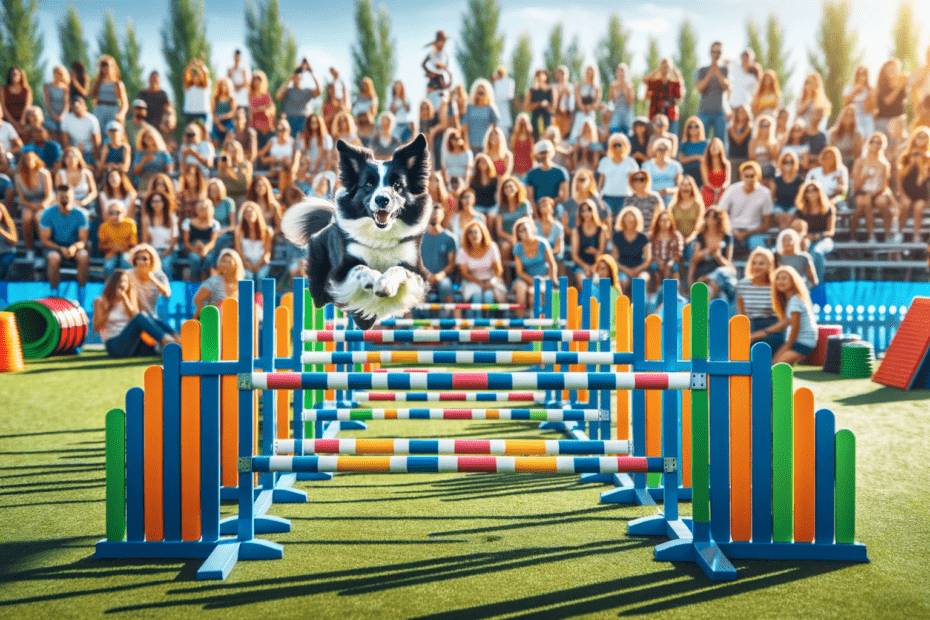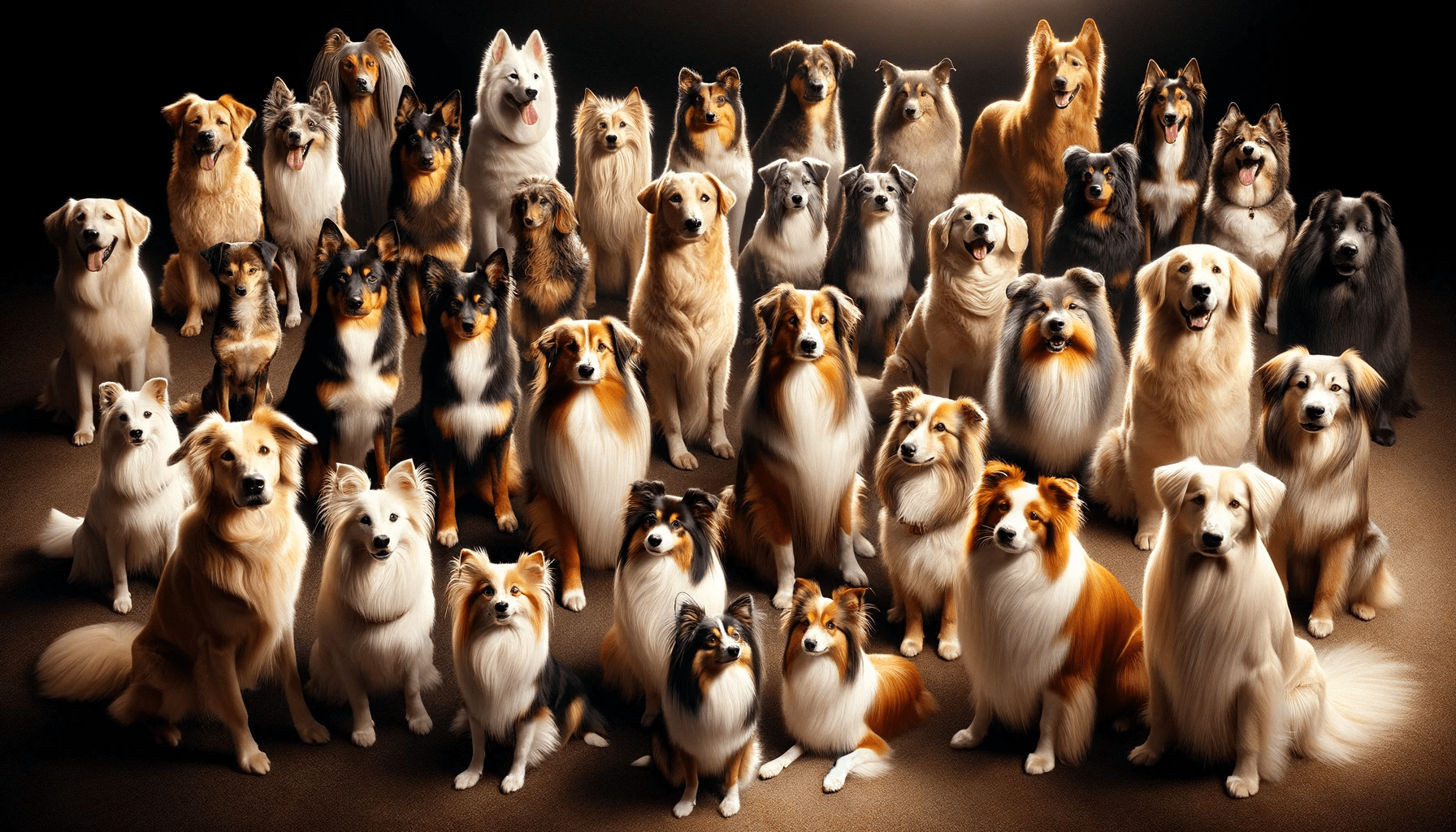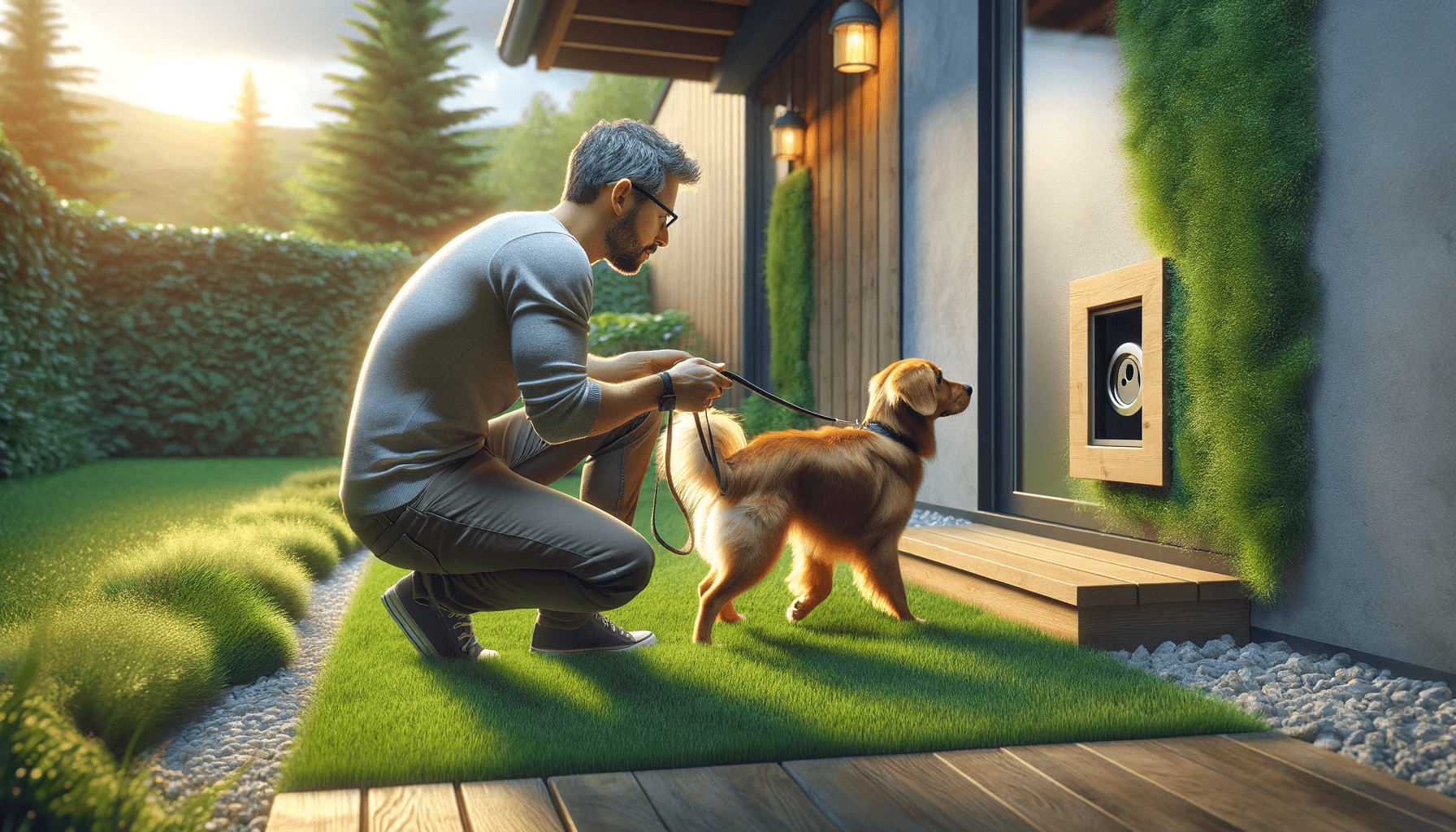Are you ready to take your dog's agility training to the next level?
In this ultimate guide, we'll show you the equipment you need, how to set up a training schedule, and how to build strength and endurance.
We'll teach you advanced obstacle techniques, strategies for improving speed and accuracy, and how to incorporate advanced handling techniques.
You'll also learn how to train for advanced distance work and develop mental focus and concentration.
Get ready to unleash your dog's full potential in agility training!
Key Takeaways
- Regular inspection and maintenance of equipment and safety measures are crucial for advanced agility training.
- Establishing a consistent training schedule and providing structure and predictability helps in achieving advanced agility.
- Interval training techniques, incorporating distractions, and gradually increasing difficulty are effective in building strength, endurance, and technique.
- Incorporating interval training, varying obstacle course design, and improving handling skills contribute to improving speed and accuracy in advanced agility.
Equipment Needed for Advanced Agility Training
To enhance your advanced dog agility training, you'll need a variety of essential equipment. Proper equipment maintenance and safety precautions are vital to ensure the safety and success of both you and your furry companion.
First and foremost, invest in high-quality agility obstacles such as jumps, tunnels, weave poles, and A-frames. Regularly inspect them for any signs of wear and tear, as well as loose screws or nails. Keeping your equipment in good condition will prevent accidents and injuries during training sessions.
Additionally, consider using safety equipment like harnesses, leashes, and collars. These not only keep your dog secure but also allow you to have better control during training. Remember to check the fit of these items regularly and replace them if they become damaged or worn out.
In terms of safety precautions, always warm up your dog before any intense training session. Start with some light stretching exercises and a short walk to loosen their muscles. This will help prevent strains or muscle injuries.
Lastly, it's crucial to create a safe training environment. Clear any potential hazards from the training area, such as sharp objects or loose debris. Always supervise your dog during training and provide them with plenty of water breaks to prevent dehydration.
Setting up a Training Schedule for Advanced Agility
Now that you've got all the necessary equipment, it's time to set up a training schedule for advanced agility.
Consistency is key when it comes to training your dog, so make sure to establish a regular routine and stick to it.
Balancing practice and rest is also important to prevent burnout and ensure your dog stays motivated and engaged.
Consistency in Training Schedule
Create a consistent training schedule for advanced agility by establishing a regular routine for your dog.
Consistency is key when it comes to advanced agility training. By sticking to a set schedule, you'll provide your dog with the structure and predictability they need to excel in their training.
Consistency also plays a crucial role in reinforcing positive behaviors and overcoming training plateaus. When you consistently reward your dog's successful performances with treats or praise, you reinforce their understanding of what's expected of them.
This positive reinforcement encourages them to continue improving and gives them the motivation they need to push through any training plateau.
Balancing Practice and Rest
When balancing practice and rest in your advanced agility training schedule, it's important to prioritize recovery and allow your dog's body time to rest and recharge. This is crucial for preventing injuries in advanced agility training.
Just like humans, dogs need warm up and cool down exercises before and after intense physical activity. Warm up exercises help to increase blood flow, loosen muscles, and improve flexibility. Simple activities like brisk walking or light jogging can prepare your dog's body for the agility training ahead.
Similarly, cool down exercises, such as walking or stretching, help to gradually decrease heart rate and prevent muscle soreness. By incorporating warm up and cool down exercises into your training sessions, you can reduce the risk of injuries and ensure that your dog stays in optimal condition.
Building Strength and Endurance in Advanced Agility Training
Ready to take your dog's agility training to the next level? Building strength and endurance is crucial for advanced agility, and there are a few key points to keep in mind.
- First, interval training techniques can help improve your dog's speed and stamina.
- Second, incorporating obstacle variations will challenge their muscles and keep them engaged.
Get ready to amp up your training sessions and watch your dog reach new heights in agility!
Interval Training Techniques
To enhance your dog's strength and endurance in advanced agility training, incorporate interval training techniques.
Interval training benefits dogs by improving their cardiovascular fitness, muscular strength, and overall endurance. These exercises involve alternating periods of high-intensity activity with periods of rest or lower intensity activity.
One effective interval training exercise is the 'sprint and recovery' method. Set up a short straightaway and encourage your dog to sprint at full speed for a specific distance. After completing the sprint, allow your dog to recover by walking or jogging slowly. Repeat this process multiple times, gradually increasing the number of sprints and the distance covered.
Another interval training exercise is the 'weave pole interval drill.' Set up a series of weave poles and guide your dog through them at a fast pace, allowing for short breaks between repetitions.
Incorporating these interval training techniques into your dog's agility training routine will help build their strength and endurance, leading to improved performance on the course.
Incorporating Obstacle Variations
Incorporate different obstacle variations to build strength and endurance in your advanced dog agility training. By introducing variations in obstacle course design, you challenge your dog both physically and mentally, helping them develop the strength and endurance needed to excel in agility competitions.
Start by adding height variations to jumps, gradually increasing the difficulty as your dog progresses. You can also incorporate tunnels of different lengths and angles to improve their agility and speed.
Another effective technique is to introduce distractions during training sessions. This can include using toys, treats, or even other dogs to simulate real-life competition scenarios. By exposing your dog to distractions, you teach them to focus and stay on task, enhancing their overall performance.
Remember to always start with simpler variations and gradually progress to more challenging ones, ensuring your dog builds their strength and endurance at a steady pace.
Teaching Advanced Obstacle Techniques
Mastering advanced obstacle techniques is crucial for you and your dog to excel in dog agility training. When it comes to teaching advanced weave pole techniques, consistency is key.
Start by using a set of six weave poles and gradually increase the difficulty by adding more poles. Encourage your dog to enter the weave poles from different angles, reinforcing the correct entry with treats and praise. Practice this drill regularly to improve your dog's speed and accuracy.
To teach advanced jumping techniques, set up a variety of jumps at different heights and distances. Begin with low jumps and gradually increase the height as your dog becomes more confident. Use verbal cues and hand signals to guide your dog over the jumps, rewarding them with treats and praise for a job well done. Incorporate different types of jumps, such as the tire jump or the broad jump, to challenge your dog's jumping skills.
Remember to always prioritize safety when teaching advanced obstacle techniques. Monitor your dog's progress and make adjustments as needed. With patience, consistency, and practice, you and your four-legged companion will become a dynamic agility team.
Strategies for Improving Speed and Accuracy in Advanced Agility
To enhance your dog's speed and accuracy in advanced agility, focus on implementing effective training strategies.
One key aspect is improving your handling skills. Practice maneuvering your dog through different courses, experimenting with different techniques and approaches. This will help you develop a strong connection and understanding with your dog, allowing for smoother and quicker transitions between obstacles.
Additionally, mental preparation for competition is crucial. Visualize yourself and your dog successfully completing the course, imagining every detail and obstacle. This mental rehearsal will help build confidence and reduce anxiety, leading to better performance on the actual day of the competition.
Another strategy is to incorporate interval training into your routine. This involves alternating between short bursts of high-intensity activity and periods of rest or lower intensity. By pushing your dog's limits and gradually increasing the intensity and duration of the intervals, you can improve their overall speed and endurance.
Lastly, analyze your dog's performance after each training session or competition. Identify areas where you both excelled and areas that need improvement. This feedback is invaluable in refining your training strategies and addressing any weaknesses.
Incorporating Advanced Handling Techniques in Training
Improve your dog's speed and accuracy in advanced agility by incorporating advanced handling techniques into your training routine. These techniques can enhance your communication with your furry friend during complex maneuvers and help you utilize effective body positioning for faster and more precise handling.
One important aspect of advanced handling techniques is improving communication with your dog during complex maneuvers. This involves using clear and concise commands to guide your dog through the agility course. For example, you can use verbal cues such as 'left' or 'right' to indicate the direction your dog should take. Additionally, hand signals can be used to provide further guidance and help your dog understand your intentions. By improving communication, you can ensure that your dog understands your instructions and can perform the agility course more accurately.
Another crucial aspect of advanced handling techniques is utilizing effective body positioning for faster and more precise handling. Your body language plays a significant role in how your dog interprets your instructions. By positioning yourself in the right place at the right time, you can guide your dog through the course with ease. For instance, leaning slightly towards the direction you want your dog to go can help communicate the desired path. Additionally, using your body to block off certain areas or create clear paths can help your dog navigate the course more efficiently.
Incorporating advanced handling techniques into your dog's agility training can take your dog's performance to the next level. By improving communication and utilizing effective body positioning, you can enhance your dog's speed and accuracy in advanced agility.
Training for Advanced Distance Work in Agility
Enhance your dog's agility skills by incorporating advanced distance work training techniques. Advanced distance handling techniques require you to guide your dog through the course from a distance, without being right beside them. This is a challenging skill that requires precision and effective communication with your furry friend.
To start, you can use advanced distance cueing methods such as body language, verbal cues, and hand signals. These cues help your dog understand the direction and path they need to take, even when you're far away. For example, you can use your body orientation and point in the direction you want your dog to go, or use verbal cues like 'left' or 'right' to indicate the desired turn.
Another technique is using obstacle focus. By teaching your dog to focus on the obstacles ahead, they can navigate the course more independently, allowing you to maintain distance. This requires training your dog to understand and respond to obstacle-specific cues.
When practicing advanced distance work, remember to gradually increase the distance between you and your dog to challenge their skills. Start with shorter distances and gradually work your way up as your dog becomes more proficient.
Developing Mental Focus and Concentration in Advanced Agility Training
Continue building your dog's agility skills by cultivating mental focus and concentration in advanced training.
Improving your dog's focus and concentration is crucial for success in advanced agility training. Here are three effective techniques to help you achieve this:
- Positive reinforcement: Use positive reinforcement techniques, such as treats, praise, and play, to reward and reinforce your dog's focused behavior. When your dog maintains focus on you during training, reward them immediately. This positive reinforcement helps them understand that staying focused leads to rewards, increasing their motivation to concentrate.
- Reducing distractions: Create a training environment with minimal distractions to help your dog stay focused. Start training in a quiet and familiar area before gradually introducing distractions. Gradually increase the level of distractions as your dog becomes more proficient in focusing. This gradual approach helps your dog build their concentration skills without becoming overwhelmed.
- Splitting tasks: Break down complex agility tasks into smaller, manageable steps. Begin with simple exercises and gradually add difficulty. This approach allows your dog to focus on one aspect at a time, ensuring they understand and master each step before progressing. By breaking tasks into smaller parts, you can help your dog maintain focus and concentration throughout the training process.
Frequently Asked Questions
How Can I Prevent Injuries During Advanced Agility Training?
To prevent injuries during advanced agility training, make sure to warm up your dog with proper exercises. This is crucial for their safety and overall performance. Incorporate stretching, jogging, and jumping to prepare their muscles and joints.
What Are Some Common Mistakes to Avoid When Teaching Advanced Obstacle Techniques?
When teaching advanced obstacle techniques, common mistakes to avoid include rushing the training process, neglecting proper foundation skills, and lacking consistency. To improve accuracy in advanced agility training, focus on precision, timing, and clear communication with your dog.
How Do I Know if My Dog Is Ready for Advanced Distance Work in Agility?
To determine if your dog is ready for advanced distance work in agility, look for signs like confident obstacle performance and solid obedience skills. Start building distance skills by gradually increasing the distance between you and your dog during training exercises.
Are There Any Specific Mental Exercises I Can Do to Improve My Dog's Focus and Concentration During Advanced Agility Training?
To improve your dog's focus and concentration during advanced agility training, try incorporating mental exercises. These exercises can include mental stimulation, problem-solving tasks, impulse control exercises, and scent work, all while using positive reinforcement.
Can I Compete in Advanced Agility Without a Professional Trainer?
Yes, you can compete in advanced agility without a professional trainer. Many training resources, such as online courses and books, provide valuable guidance. With dedication and practice, you can develop the skills needed to excel in solo competition.
Conclusion
Congratulations! You now have all the tools and knowledge to take your dog's agility training to the next level.
By using the right equipment, setting a training schedule, and focusing on building strength, endurance, and mental focus, you and your furry friend will become a dynamic agility duo.
By incorporating advanced obstacle techniques, handling techniques, and distance work, you'll improve your speed, accuracy, and overall performance.
So go out there and show off your skills on the agility course!






